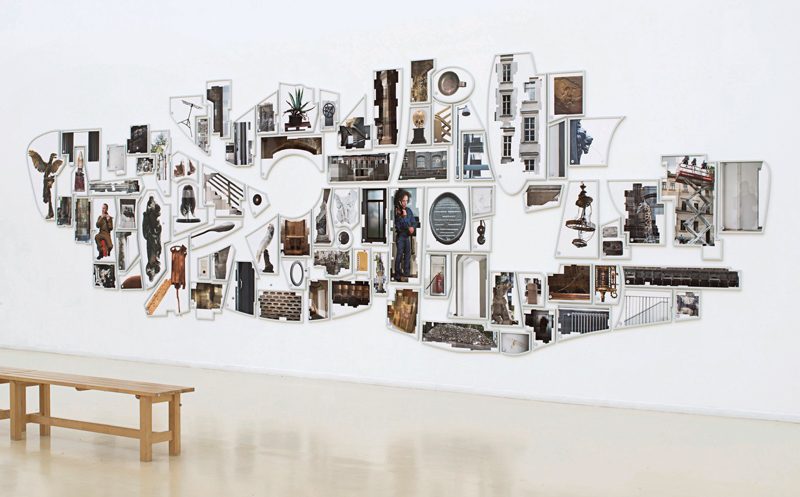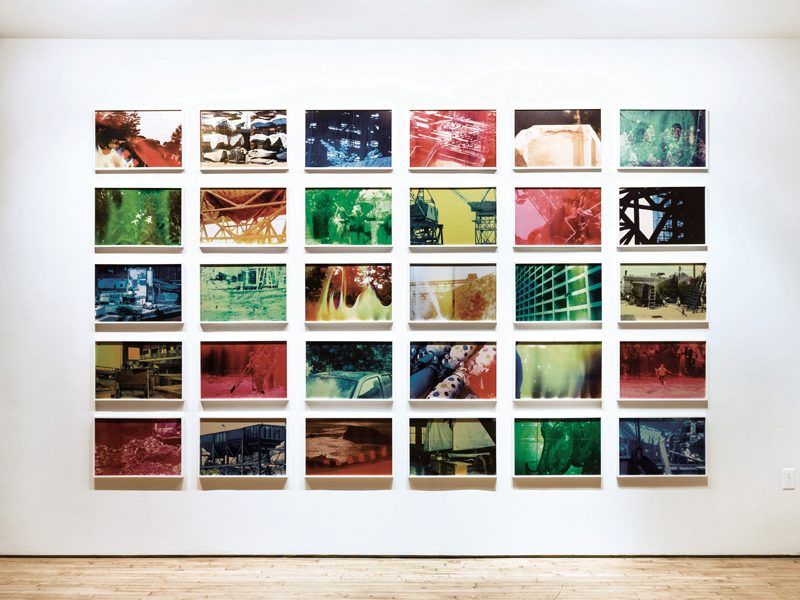An interview by Zoë Tousignant
Quentin Bajac has been the chief curator of photography at the Museum of Modern Art, New York, since 2013. In the fall of 2015, MoMA opened the exhibition Ocean of Images: New Photography 2015 (November 7, 2015, to March 20, 2016) and published the third volume in the Photography at MoMA series. The interview below took place in Montreal on the day after Bajac’s keynote address, “Après la photographie?,” presented at the Mois de la Photo à Montréal 2015 colloquium.
ZT: After your address yesterday, an audience member asked you to define what your particular contribution will be as chief curator of photography at MoMA, as you follow in the footsteps of Beaumont Newhall, Edward Steichen, John Szarkowski, and Peter Galassi. You answered that you offer a pluridisciplinary vision of photography. I would like to propose that you also bring a sense of history.
QB: Yes, I do also offer a sense of history – that is, I arrive with my awareness as a historian, a curator who has worked in the historical periods of the nineteenth and twentieth centuries and the contemporary period, and I’ve written quite a bit about photography from its origins to the present, so I’ve always like to put things in perspective. Also, the photography department at MoMA, which is the oldest photography department in a museum of modern and contemporary art, has a historical role, and it therefore must be, if not faithful to, at least aware of its history.
I think that it’s important, this difference between fidelity and awareness. We have to be aware of our history, of what we have accomplished, but we must also have the freedom to break away from it to write our own history. I think that the MoMA model sometimes gets stuck, and we have to know that it exists and use it, but we also have to extend and enrich it. If we don’t, we risk a sort of fossilization, or ossification, of the history of photography. I am aware of these two historical perspectives, and that’s why one of the first things I did when I arrived at the museum (even though it took a little longer than planned) was to write a book about the collection.
ZT: You’re writing a guide to the collection?
QB: It’s more than a guide. I wanted something that would give us a little time, a little depth – the time to tell a story about its historical and geographic diversity, and also the diversity of approaches. In fact, there is this great tradition of “straight photography” – documentary photography – at MoMA, but if we look at the history of MoMA before John Szarkowski, Steichen had a very different vision – he was interested in the press, in European photography, in experimental photography – and Newhall also had different tastes. And then, photography at MoMA goes beyond the photography department.
There were exhibitions in the 1970s – I’m thinking about the exhibition Information, around conceptual practices – in which photography was very present. Various histories of photography have been woven at MoMA beyond simply the history of the photography department. Thus, there are a number of voices.
So, we’re doing Photography at MoMA. It’s not a history of photography, but we’re using the collection as a starting point and not restricting ourselves to the department’s collection. We’re borrowing a few works from our colleagues in Painting and Sculpture, Media and Performance, and Prints and Drawings, because photography is everywhere in one way or another. We are doing three volumes, and we’re starting at the end. We start with the contemporary and go back in time. The third volume, which has just been published, deals with the 1960s to the present. The one on the modern period will, I hope, come out next autumn, and the one on the historical period in autumn 2017. You were talking about this historical perspective, and yes, I think there has to be one.
ZT: The exhibition Ocean of Images is presented as part of the annual New Photography series, which, from what I understand, focuses on contemporary and emerging production, with a mandate of making a sort of “statement” about what is going on today in photography. What will this series become, in your hands?
QB: The series is thirty years old; it was launched by Szarkowski in 1985. I’m not sure if there was the idea of a statement at the inception. The idea was really to show photographs. John was always very logical and true to himself and his thought – from the beginning he said, “I’m not interested in thematic exhibitions. What interests me is to present photographers and artists, and not necessarily to link them together.” I think that when he launched New Photography, that’s what was on his mind. And it was to return contemporary production to prominence, at a time when criticisms were being made of MoMA that the museum was beginning to historicize itself and was less interested in the contemporary.
But I don’t think that that he had this kind of general state in mind. That said, if you look at the twenty-four editions that have been mounted over thirty years – because MoMA was closed for a time in the early 2000s – they describe a spirit of the times. We see very clearly that the four or five first editions, which corresponded to the last part of Szarkowski’s mandate, were strongly marked by a history of blackand-white, very American, photography. And when Peter Galassi took over as head of the department in the 1990s, we see a corresponding explosion of formats, colours, and so on, and it became much more international and very European, because Peter had a strong tendency to look to Europe. And when the museum reopened in 2005–06, there was a greater interest in the transformation of the photographic medium and in welcoming more hybrid practices.
And to commemorate the thirtieth anniversary, I thought it was time to take this opportunity to re-think New Photography, to rethink the formula. I felt that it lacked a bit of visibility, including in photography circles, notably in Europe, because there had never been a catalogue, and because it takes place only in the autumn in a single room in the photography gallery. I wanted to try to increase its visibility and scope, to redo everything while retaining its spirit, because I believe it’s important that we continue this pioneering series, which has lasted thirty years, in our policy in the contemporary and acquisition spheres.
I also want to redefine what we mean by “new.” “New photography” means artists who have not received much exposure in New York, who have not had major exhibitions in an institution; or, if they have already had exhibitions in New York, we insist that they present works that have not yet been shown, and as much as possible very recent works, produced within the past two years.
We’re also putting New Photography on a different schedule: now, it will be produced every two years, in a larger space. So, instead of inviting two to five artists every year, we will invite ten to fifteen every two years.
And thus we will try to present the various forms that photography takes today; we’ll try to open up photography, bring it out of the verticality of the wall, try to invade the space of the gallery. I’m thinking in terms of presentation, which will be different from the preceding New Photography shows. That said, does this define a statement? The statement is, rather, around diversity: diversity of practices, circulation of images, the fact that today photography is an extremely ubiquitous form, which museums and artists seem to be rediscovering. As much as I think that in the 1980s and 1990s, art photographers produced essentially for galleries and thought of the verticality of framed images, I feel that the Internet has made it possible to rethink this, to deconsecrate the space of the museum. It has made it possible to think of other forms – to return to books and other forms besides the classic forms of the photographic image in the museum. And we are taking these forms into account.
And here, I distance myself from Le Mois de la Photo à Montréal 2015 and Joan Fontcuberta’s discourse, which contains a statement around “post-photography”; as you will have understood, I refuse to use this term. Our idea is, more modestly, to take a close look at photography, and especially not to seek a sort of ontology or identity of the photographic form. In a sense, if there were a statement, by default it would say that the nature of photography exists in its diversity and its multiple possibilities.
ZT: Yet, the rhetoric used in the press release for Ocean of Images is quite similar to that for the most recent Le Mois de la Photo à Montréal, in that it also expresses the “overwhelming” dimension of photography today.
QB: For Ocean of Images, we thought for a long time about whether we wanted a title. I don’t know if there will be a title for following editions. I like this title because, in the end, the ocean is a fairly neutral term. It’s something that you can navigate on, swim in with great pleasure, and which can become terrible during storms. It’s a peaceful place, where you may meet pirates; it’s a place that’s international but where national statutes sometimes apply. I’m not thinking at all that we have to be pessimistic with regard to the image today, nor in a state of shock, or ecstasy, which I think is sometimes the reaction to this new given. I see it as quite neutral, but it nevertheless takes account of the world in which we live.
ZT: And what will be the commemorative aspect of the exhibition that you mentioned?
QB: We have decided to put online a certain amount of information about the series – installation views, a list of previous exhibitions, interviews with artists, press reviews of the time – rather than produce a catalogue. We just published the third volume on the collection, related to the contemporary period, which contains many images presented in New Photography over the last thirty years. So, we’re putting this information online at the same time, and we’ll update it with each new edition.
Translated by Käthe Roth
Zoë Tousignant is a historian of photography and an independent expert on Canadian photography. She holds a doctorate in art history from Concordia University.


